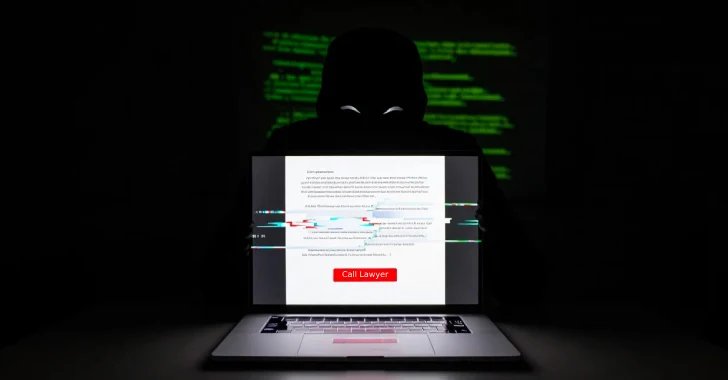Essential Insights
-
Qilin Ransomware Expansion: The Qilin ransomware group is enhancing its services by offering legal counsel to affiliates, intensifying pressure on victims to pay ransoms amidst the decline of its rivals.
-
Increased Activity and Victims: Qilin has gained prominence, reportedly behind 72 attacks in April 2025 and 304 total victims since January, suggesting an influx of former affiliates from other defunct ransomware groups.
-
Advanced Features and Infrastructure: The group provides a sophisticated ecosystem, including custom-built malware, spamming services, and a newly integrated "Call Lawyer" feature designed to intimidate victims during negotiations.
- Law Enforcement Actions: Recent law enforcement activities have led to arrests and extraditions of individuals linked to various ransomware operations, highlighting ongoing global efforts to counteract cybercrime networks.
Underlying Problem
The Qilin ransomware-as-a-service (RaaS) syndicate is ramping up its operations by introducing a peculiar “Call Lawyer” feature for its affiliates, aimed at coercing victims into compliance with ransom demands. This innovative tactic is indicative of Qilin’s resurgence amidst the decline of competing cybercriminal groups like LockBit and RansomHub, both of which have experienced operational failures and market exits. Since its inception in October 2022, Qilin has escalated its activities, reporting 72 victims in April 2025 alone and establishing itself as the third-most active ransomware group, trailing only Cl0p and Akira. The group has been characterized by its sophisticated infrastructure, extensive support services, and robust operational features, effectively marketing itself as a comprehensive cybercrime platform.
The revelation comes on the heels of recent law enforcement actions, including the extradition of an alleged member of the Ryuk ransomware group to the U.S. for facilitating cyberattacks, highlighting the increasing collaboration and adaptation within criminal enterprises. Notable figures, such as one referred to as “tinker,” have played pivotal roles in accessing companies through ingenious phishing schemes, depicting how experienced individuals from dismantled groups are contributing to new threats. The confluence of these developments underscores not only the evolving landscape of cybercrime but also the persistent attention from law enforcement agencies mobilizing against such actors. Reports from cybersecurity firms and law enforcement authorities provide a troubling glimpse into the operational sophistication and potential ramifications of this rising e-crime faction.
Critical Concerns
The emergence of the Qilin ransomware-as-a-service (RaaS) platform, notably featuring legal counsel for affiliates, poses a substantial risk to businesses, users, and organizations across various sectors. This innovative approach not only amplifies the pressure on victims to capitulate to ransom demands through the guise of legal negotiations but also underscores a troubling shift in the cybercrime landscape, where the operational complexities and resources of Qilin’s model flood the market left by failing rivals. As affiliates from dismantled groups migrate to Qilin, the potential for increased attacks rises dramatically, threatening an array of organizations with not just financial loss, but also reputational damage and legal ramifications. The integration of advanced infrastructure, including DDoS capabilities and targeted phishing attacks, converts Qilin into a formidable competitor, strategically positioning it as a comprehensive cybercrime service. Consequently, any business that becomes a victim of Qilin’s operations could inadvertently trigger cascading effects—instilling fear among stakeholders, driving up insurance costs, and creating an environment of distrust that reverberates through industries and communities alike.
Possible Actions
Timely remediation is crucial in mitigating the impact of the ever-evolving Qilin ransomware, particularly given its alarming feature that encourages victims to engage legal counsel, thus imposing heightened pressure for larger ransom demands.
Mitigation Steps
- Regular Backups
- Implement and routinely test comprehensive backup protocols to ensure data recovery.
- User Training
- Conduct ongoing cybersecurity awareness training for employees to recognize phishing attempts.
- Access Controls
- Enforce strict access control policies, ensuring that users have the minimum necessary access rights.
- Incident Response Plan
- Develop and maintain an incident response plan tailored to ransomware scenarios, incorporating legal consultation protocols.
- Patch Management
- Regularly update software and systems to mitigate vulnerabilities exploited by ransomware.
- Network Segmentation
- Segment networks to limit the spread of ransomware in case of an infection.
- Threat Intelligence
- Utilize threat intelligence services to stay informed about emerging ransomware variants and their tactics.
NIST CSF Guidance
The NIST Cybersecurity Framework emphasizes a proactive approach to risk management and incident response. For deeper insights, refer to NIST SP 800-61, which provides comprehensive guidelines for computer security incident handling and recovery strategies. This resource highlights the importance of preparedness, detection, and timely response in the face of ransomware threats.
Stay Ahead in Cybersecurity
Stay informed on the latest Threat Intelligence and Cyberattacks.
Learn more about global cybersecurity standards through the NIST Cybersecurity Framework.
Disclaimer: The information provided may not always be accurate or up to date. Please do your own research, as the cybersecurity landscape evolves rapidly. Intended for secondary references purposes only.
Cyberattacks-V1

